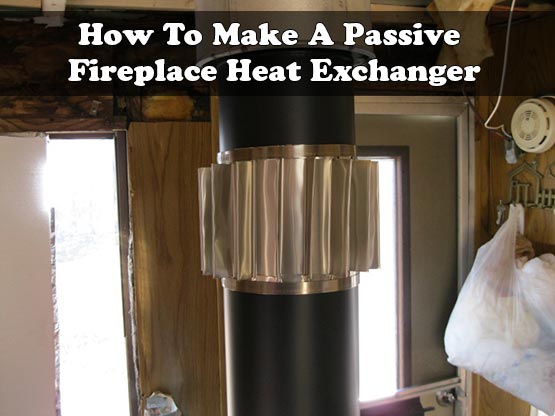How To Make A Passive Fireplace Heat Exchanger
Make sure to like Living Green and Frugally on Facebook, Shop at Amazon to help support my site and explore our PINTEREST BOARDS for innovative ways you can become self-sufficient.
As cozy as a traditional hearth fireplace may seem, it’s actually notorious for wasting heat. In fact, most old-fashioned fireplaces send more heat up the chimney than into your living space, making them inefficient for heating your home. With more states now banning the construction of these types of fireplaces in new builds or remodels, homeowners are looking for alternative ways to improve the efficiency of their existing fireplaces. One effective solution is to install a fireplace heat exchanger.
A passive fireplace heat exchanger is a simple, utilitarian device that significantly boosts the amount of heat your fireplace puts into the room. Rather than letting the warm air escape through the chimney, this system draws in cold air from the room, heats it via pipes placed in or around the fireplace, and then releases the heated air back into the room. It’s a practical and energy-efficient way to maximize the heat output of your existing fireplace without major renovations.
The best part? You can build one yourself with affordable materials, even if you’re not a seasoned DIYer. With some basic tools and a few hours, you can assemble a passive heat exchanger and start enjoying the warmth your fireplace was meant to provide. This simple device can save energy, reduce your heating bills, and make your home more comfortable—especially in the colder months.
Benefits of a Passive Fireplace Heat Exchanger:
- Increased Heat Efficiency: A heat exchanger helps recover lost heat, ensuring that more warmth stays inside your home instead of escaping up the chimney.
- Energy Savings: By improving the heat output of your fireplace, you can potentially lower your overall energy consumption and heating bills.
- Environmentally Friendly: Making your fireplace more efficient reduces the amount of fuel you burn, which can lessen your carbon footprint.
- Easy to Build: With just a few simple materials—such as metal pipes, a fan, and some basic tools—you can build a heat exchanger in a weekend.
- Cost-Effective: Instead of investing in expensive fireplace upgrades, a DIY heat exchanger allows you to improve the efficiency of your fireplace at a fraction of the cost.
If you love the ambiance of your fireplace but wish it was better at heating your room, a passive heat exchanger is the solution you’ve been looking for. It’s an easy DIY project that pays off in comfort and savings, helping you get the most out of your existing fireplace.
Ready to make one yourself? Click the link below for step-by-step instructions on How to Make a Passive Fireplace Heat Exchanger and start reclaiming the heat that’s been escaping your home!
